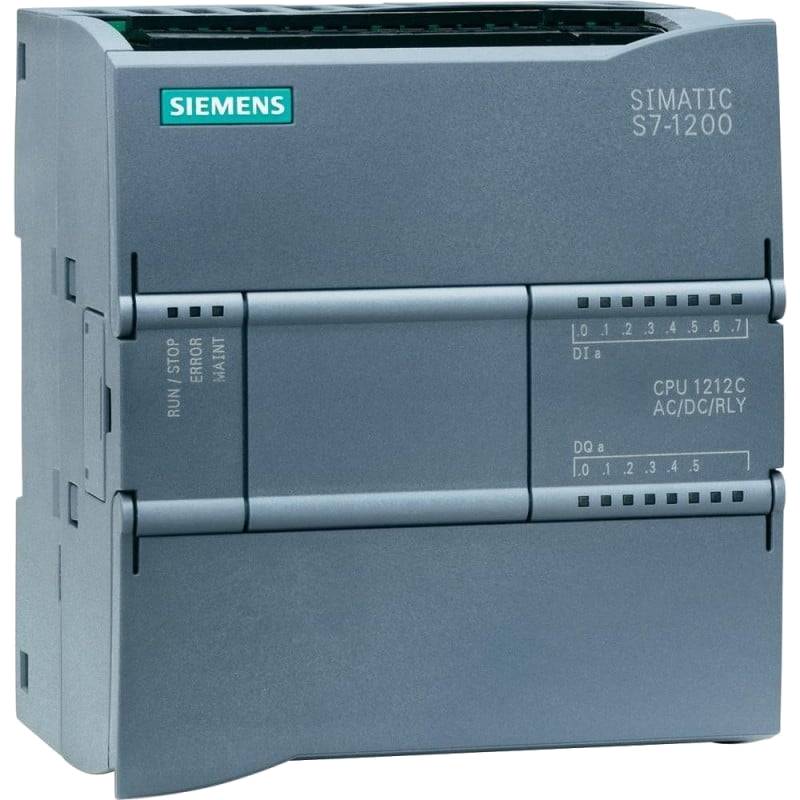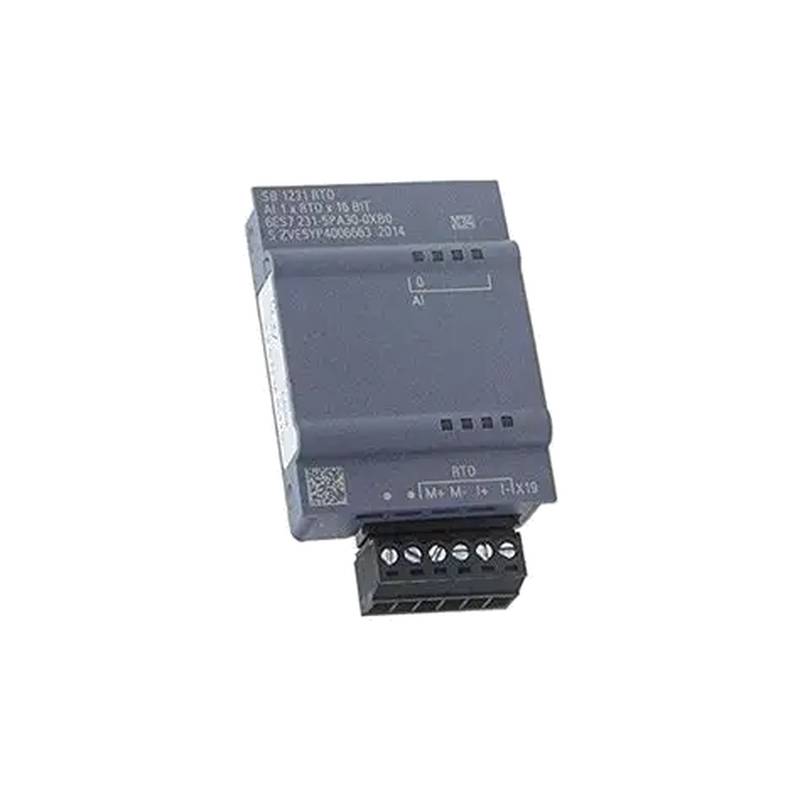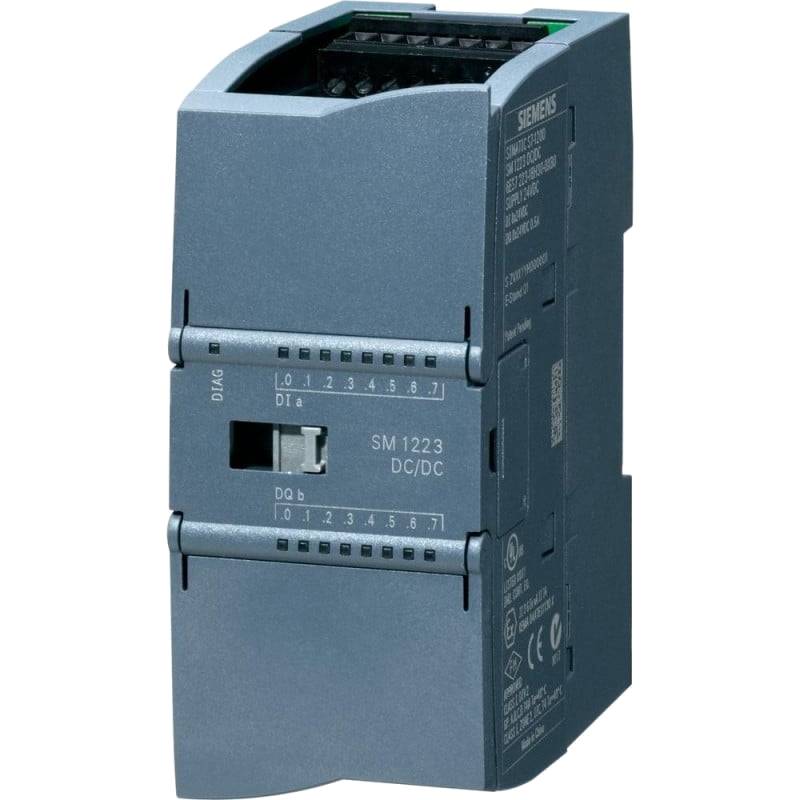
The Siemens 1FL6092-1AC61-2AA1 is a standard servo motor engineered for precision and reliability in demanding industrial automation tasks. This motor excels due to its high torque density, efficient operation, and robust construction, making it a preferred choice for applications requiring dynamic motion control. Its core technical specifications include a nominal torque of 6 Nm, a rated speed of 6000 rpm, and an operating voltage of 400V. The motor's compact design and seamless integration capabilities with Siemens' drive systems further enhance its appeal in the competitive automation landscape.
Product Specifications
| Parameter | Value |
| :-------------------- | :----------------------------------- |
| Motor Type | Standard Servo Motor |
| Manufacturer | Siemens |
| Product Number | 1FL6092-1AC61-2AA1 |
| Nominal Torque | 6 Nm |
| Rated Speed | 6000 rpm |
| Operating Voltage | 400V |
| Without Brake | Yes |
| Frame Size | 1FL6092 |
| Shaft Type | With keyway |
| Protection Class | IP65 |
| Insulation Class | F |
| Ambient Temperature | 0 to 40 °C |
Core Features & Market Positioning
The Siemens 1FL6092-1AC61-2AA1 distinguishes itself through its optimized winding design, which delivers superior performance and energy efficiency compared to many competitors in the standard servo motor segment. Its market positioning is firmly rooted in its reliability and Siemens' established reputation for quality and support within industrial automation. This motor offers a cost-effective yet high-performance solution for machine builders and system integrators seeking dependable motion control without the added complexity or cost of an integrated brake. The availability of comprehensive documentation and compatibility with the SINAMICS drive family positions it as a strong contender for new projects and upgrades.
Key Application Scenarios
This servo motor is ideally suited for a wide array of industrial applications where precise and dynamic positioning is critical. Common scenarios include use in packaging machinery, material handling systems, assembly lines, and machine tools. Its robust performance makes it suitable for pick-and-place operations, automated guided vehicles (AGVs), and robotic arm movements. The 1FL6092-1AC61-2AA1 is also a practical choice for any application requiring continuous, controlled motion with high accuracy and repeatability, such as printing presses or textile machinery.
Practical System Integration Guidance
Integrating the Siemens 1FL6092-1AC61-2AA1 into an automation system is streamlined through its compatibility with Siemens' broader portfolio. Connection to a SINAMICS drive, such as a SINAMICS V90 or S210, is typically achieved using a standard motor cable. Proper wiring involves connecting the motor's power and encoder phases according to the drive's manual. Commissioning requires parameterization of the connected drive, which includes defining motor data, control modes (e.g., position, speed, torque), and safety limits. Ensuring the motor's thermal protection is correctly configured within the drive is also a critical step for longevity.
Operation and Risk Mitigation
Safe operation of the Siemens 1FL6092-1AC61-2AA1 hinges on adherence to electrical safety standards and proper system design. Risks associated with servo motor operation include mechanical hazards from moving parts and electrical hazards. It is imperative to ensure that the motor and its connected drive are properly grounded. Overheating can be mitigated by ensuring adequate ventilation and correct sizing of the motor and drive for the application's load profile. Fault codes displayed on the connected SINAMICS drive should be cross-referenced with the drive's manual for accurate diagnosis and resolution of issues such as overcurrent, overvoltage, or communication errors.
Scalability & Long-Term Value
The Siemens 1FL6092-1AC61-2AA1 offers significant long-term value through its integration within the Siemens ecosystem. This allows for easy scalability; as automation requirements grow, machines can be upgraded with more powerful motors or additional axes, all managed by compatible SINAMICS drives. Its compatibility with industrial Ethernet protocols and IIoT platforms enables seamless integration into smart factory environments, facilitating data logging, remote monitoring, and predictive maintenance strategies. This future-proof design ensures that investments in Siemens automation hardware remain relevant and adaptable to evolving industrial demands.
Frequently Asked Questions
What is the nominal torque of the Siemens 1FL6092-1AC61-2AA1?
The Siemens 1FL6092-1AC61-2AA1 features a nominal torque rating of 6 Nm. This torque value is crucial for determining its suitability for applications requiring consistent rotational force. It directly influences the motor's ability to accelerate loads and maintain speed under varying conditions.
This nominal torque is a key specification for engineers designing automation systems. It represents the continuous torque the motor can deliver at its rated speed without exceeding thermal limits. Understanding this parameter is vital for selecting the correct motor size to avoid under- or over-specification, ensuring optimal performance and efficiency for the intended application.
The 6 Nm rating signifies a moderate torque output, ideal for a wide range of standard industrial automation tasks. It balances power with the motor's physical size and energy consumption, making it a versatile choice for machines that don't demand extreme torque levels but still require precise, dynamic control.
What is the maximum rated speed for this servo motor?
This servo motor is designed for a maximum rated speed of 6000 revolutions per minute (rpm). This high speed capability is essential for applications demanding rapid movements and quick cycle times. It allows for efficient operation in automated processes where speed directly impacts throughput.
The 6000 rpm rating indicates the motor's robust construction and efficient design, enabling it to maintain performance at elevated rotational velocities. This is a critical factor for applications such as high-speed pick-and-place operations or rapid material transport systems within automated manufacturing lines.
Achieving and sustaining this speed requires precise control from the connected drive and a well-balanced motor. Engineers must consider this maximum speed when designing their systems to ensure operational safety and prevent premature wear on mechanical components, thereby maximizing the lifespan of the servo motor.
Does the Siemens 1FL6092-1AC61-2AA1 include an integrated brake?
No, the Siemens 1FL6092-1AC61-2AA1 standard servo motor is specifically designed and manufactured *without* an integrated brake. This distinction is crucial for system designers when planning their automation solutions. The "without Brake" designation in its product number (1FL6092-1AC61-2AA1) highlights this specific feature.
For applications that absolutely require braking functionality, an external brake unit would need to be sourced and integrated into the machinery. Alternatively, users might consider different Siemens servo motor series that do come equipped with factory-fitted brakes if that is a mandatory requirement for their particular setup.
The absence of a brake can offer advantages such as a smaller motor footprint, reduced power consumption, and potentially lower initial cost compared to models with integrated brakes. However, it necessitates careful consideration of holding torque requirements and fail-safe mechanisms within the overall machine design.
What voltage is required to operate the Siemens 1FL6092-1AC61-2AA1?
The Siemens 1FL6092-1AC61-2AA1 servo motor operates on a nominal supply voltage of 400V. This voltage requirement is standard for many industrial automation systems, particularly in regions with a 3-phase power infrastructure operating at this level. The 400V rating ensures sufficient power delivery for the motor's performance characteristics.
Proper power supply matching is critical for the motor's performance and longevity. It must be connected to a compatible drive, such as a Siemens SINAMICS series drive, which is configured to output the correct 400V supply and handle the motor's current demands. Using an incorrect voltage can lead to malfunction or damage.
Engineers and technicians must verify that their plant's electrical infrastructure can reliably provide a stable 400V supply to the motor and its drive system. This includes ensuring the supply can handle the peak current draw during acceleration and demanding operational phases, preventing voltage drops that could impact control accuracy.
How does the frame size of the 1FL6092 motor affect its application?
The "1FL6092" designation in the product number indicates its specific frame size. Frame sizes in servo motors correlate directly with the motor's physical dimensions, mounting configuration, and its inherent power/torque capabilities. A larger frame size generally implies a motor capable of higher torque output and greater heat dissipation.
This particular frame size is optimized to house the motor's internal components, including the rotor, stator, and winding. It determines how the motor will physically fit within a machine's enclosure or on its mounting platform. Proper selection based on frame size ensures mechanical compatibility and secure installation.
Choosing the correct frame size is essential for ensuring that the motor can be securely mounted and that it provides the necessary torque and speed for the application without being physically oversized or undersized. The 1FL6092 frame size represents a balance of performance and compactness suitable for many standard industrial automation tasks.
What is the protection class (IP rating) of this motor and why is it important?
The Siemens 1FL6092-1AC61-2AA1 has an IP65 protection class rating. This signifies that the motor is dust-tight and protected against water jets from any direction. The "6" indicates superior dust protection, while the "5" denotes resistance to low-pressure water jets.
This IP65 rating is critical for industrial environments where dust, moisture, or liquid contaminants are present. It ensures the motor's internal electrical components are shielded from ingress, preventing short circuits, corrosion, and premature failure, thereby enhancing operational reliability and longevity in harsh conditions.
By offering robust protection against environmental factors, the IP65 rating allows this servo motor to be deployed in a wider range of applications, including those in washdown areas or production floors prone to particulate contamination. This reduces maintenance needs and the risk of unexpected downtime associated with environmental exposure.
What does "without Brake" mean in the context of this servo motor?
"Without Brake" means that the Siemens 1FL6092-1AC61-2AA1 servo motor does not have a built-in electromagnetic brake for holding the shaft stationary when power is removed. This is a deliberate design choice that affects how the motor is used in applications.
In systems where a brake is typically required for safety or to hold a load against gravity, an external braking solution must be implemented. This could involve a separate mechanical brake unit or utilizing the drive's holding torque capabilities under specific conditions and with appropriate safety considerations.
The absence of an integrated brake can lead to a more compact motor design and potentially lower energy consumption. However, it places the responsibility on the system integrator to ensure that adequate stopping and holding capabilities are addressed through other means, especially for vertical axis applications or where unexpected power loss is a concern.
Can this motor be used with third-party drive systems?
While the Siemens 1FL6092-1AC61-2AA1 is optimized for use with Siemens SINAMICS drives, it is technically possible to interface it with certain third-party drive systems. However, this requires careful consideration of encoder feedback compatibility, motor parameterization, and precise tuning of the drive's control algorithms to match the motor's characteristics.
Successful integration with non-Siemens drives often involves selecting a drive that supports the specific encoder type used by the motor (e.g., Hiperface, EnDat) and can be precisely programmed with the motor's detailed electrical and mechanical parameters. This process can be complex and may not yield the same level of performance or diagnostic capabilities as using a dedicated Siemens drive.
For optimal performance, reliability, and access to comprehensive diagnostics and support, it is strongly recommended to use the Siemens 1FL6092-1AC61-2AA1 with a compatible Siemens SINAMICS drive. This ensures seamless integration, efficient commissioning, and maximizes the benefits of the Siemens automation ecosystem.
What is the significance of the "Standard Servo Motor" designation?
The "Standard Servo Motor" designation signifies that the Siemens 1FL6092-1AC61-2AA1 belongs to a product category offering a balance of performance, features, and cost-effectiveness. These motors are designed for a broad range of common automation tasks where extreme specialized capabilities are not required.
Compared to specialized servo motors (e.g., high-dynamic, low-inertia, or high-temperature variants), standard motors typically offer a robust but less extreme performance envelope. They are engineered for reliable operation under typical industrial loads and duty cycles, making them a versatile and economical choice for many applications.
This designation also implies that the motor is part of a well-established product line, ensuring good availability, comprehensive documentation, and broad compatibility with associated drive systems and accessories from the manufacturer. It represents a proven and reliable solution for everyday automation challenges.
How does the IP65 rating affect installation and maintenance?
The IP65 rating allows for more flexible installation options, as the motor can be placed in environments exposed to dust and water splashes without requiring additional protective enclosures. This can simplify machine design and reduce overall system footprint.
During maintenance, the IP65 rating means that cleaning the motor with water or compressed air is generally permissible, provided high-pressure jets are avoided. However, care must still be taken to ensure seals remain intact and that water does not enter through connection points if they are not equally protected.
While the motor itself is protected, it's crucial that any associated cabling and connectors also meet appropriate environmental protection standards to maintain the integrity of the overall system's ingress protection. Regular inspection of seals and housing is recommended to ensure the IP65 rating remains effective over time.























